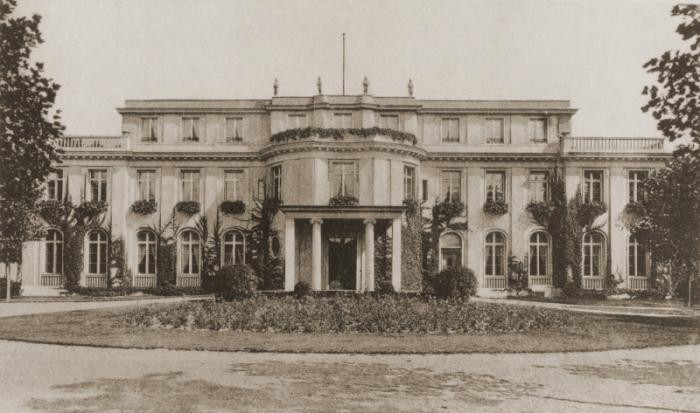
1942: Key Dates
January 7
SS authorities established the civilian prisoner camp Stutthof, near Danzig (Gdansk) on September 2, 1939. On January 7, 1942, the Inspectorate of Concentration Camps redesignates Stutthof as a concentration camp.
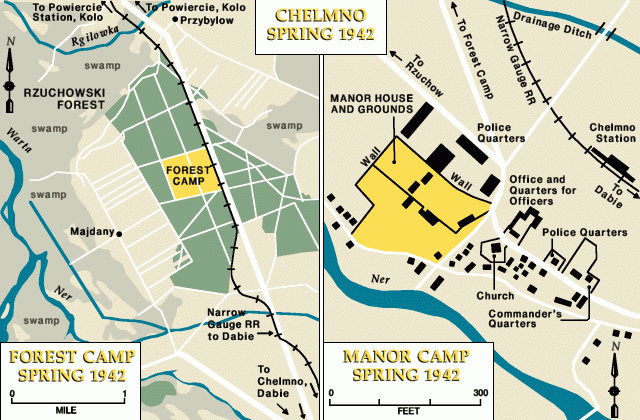
January 16
German authorities begin the deportation of Jews from the Łódź ghetto to Chelmno. By 1945, at least 167,000 Jews and approximately 4,300 Roma (Gypsies) are murdered at Chelmno.
January 20
Reich Security Main Office (RSHA) chief Reinhard Heydrich convenes the Wannsee Conference in a villa outside Berlin. There he presents plans to coordinate a European-wide “Final Solution of the Jewish Question” to key officials from the German State and the Nazi Party.
March 1
The Inspectorate of Concentration Camps opens a second camp at Auschwitz, called Auschwitz-Birkenau or Auschwitz II. The first prisoners are 945 Soviet prisoners of war and a few Polish prisoners from Auschwitz I. Auschwitz-Birkenau was originally designated for the incarceration of large numbers of Soviet prisoners of war. Although it continues to serve as a concentration camp, it also functions as a killing center from March 1942 until November 1944.
March 9
Slovak authorities require all Jews to wear the yellow Star of David on their outer clothing.
March 17
German SS and police authorities begin the first deportations of Jews, from the ghettos in Lublin and Lvov, to the Belzec killing center. These are the first major deportations within the framework of Operation Reinhard. The SS Special Detachment stationed at Belzec kills at least 434,508 Jews in gas chambers with carbon monoxide gas between March 17 and December 31, 1942. The SS also kills an undetermined number of Roma (Gypsies) at Belzec.
March 26
Slovak authorities begin systematic deportations of Jews from Slovakia. Between March and October 1942, Slovak authorities deport nearly 58,000 Slovak Jews into German custody. The Germans ultimately deport nearly 19,000 of them to Auschwitz and 39,000 to Lublin District, selecting 9,000 as forced laborers in the Lublin/Majdanek concentration camp and deporting at least 24,378 on to the Sobibor killing center.
March 27
German authorities begin systematic deportations of Jews from France. The first train contains approximately 1,000 Jews from the Compiègne and Drancy detention camps; German authorities send it to Auschwitz-Birkenau. By the end of August 1944, the Germans will deport more than 75,000 Jews from France to camps in the east, mostly to the Auschwitz-Birkenau killing center. Fewer than 3,000 survive.
April 27
In the Netherlands, the German Higher SS and Police Leader issues a decree requiring all Jews to wear the yellow Star of David on their outer clothing.
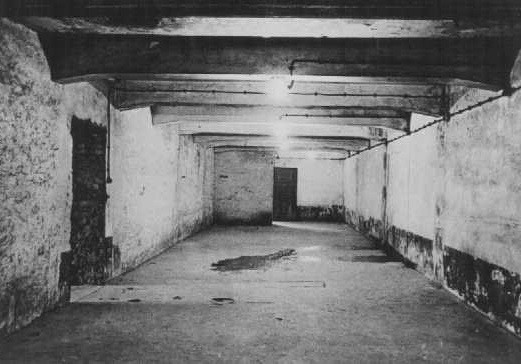
May
SS officials perform the first selection of victims for gassing at the Auschwitz-Birkenau killing center. An SS medical officer selects weak, sick, and “unfit” prisoners from the isolation ward. These prisoners are put onto a truck and taken to a bunker, where they are killed with Zyklon B (prussic acid) gas. Between May 1940 and January 1945, camp authorities kill more than one million people at the Auschwitz camp complex. SS authorities do not register 865,000 arriving prisoners, mostly Jews, whom they most likely selected for gassing immediately upon arrival.
May 7
After trial gassings in April, the SS Special Detachment Sobibor begins gassing operations at the Sobibor killing center. By November 1943, the special detachment has killed at least 167,000 Jews and an undetermined number of Poles, Roma (Gypsies), and Soviet prisoners of war at Sobibor by means of carbon monoxide gas or by shooting.
May 27
In occupied Belgium, German authorities issue a decree requiring all Jews to wear the yellow star.
May 29
German authorities require all Jews residing in France to wear the yellow Star of David on their outer clothing, effective June 7.
June 1
The German Security Police and SD take control of the Westerbork camp in the Netherlands, initially established by the Dutch government to intern Jewish refugees who had entered the Netherlands illegally, and transform it into a transit camp.
June 1–June 6
German authorities begin deportations of Jews from the Krakow ghetto. By June 8, the Germans deport 6,000 Jews from the ghetto to the Belzec killing center.
June 7
On May 29, 1942, German authorities require all Jews residing in France to wear the yellow Star of David on their outer clothing, effective June 7.
June 11
Auschwitz concentration camp authorities establish a camp at the site of the I.G. Farben plant near Monowitz and redesignate the Buna Labor Detachment as the Buna (or Monowitz) subcamp of Auschwitz.
July 4
German authorities begin systematically gassing Jews at the Auschwitz killing center.
July 15
German authorities begin deportation of Dutch Jews from the Westerbork, Amersfoort, and Vught camps in the Netherlands to killing centers and concentration camps in Germany and German-occupied Poland. By September 3, 1944, around 100 trains have carried more than 100,000 people to Auschwitz, Sobibor, Theresienstadt, and Bergen-Belsen, including about 60,000 Jews to Auschwitz and about 34,000 Jews to Sobibor.
July 19
Reichsführer-SS (SS chief) Heinrich Himmler issues a general order to the Higher SS and Police Leader in the Generalgouvernement that, by December 31, 1942, SS and police authorities “resettle” all Jews residing in the Generalgouvernement, either to the killing centers or in closed camps located in the major cities.
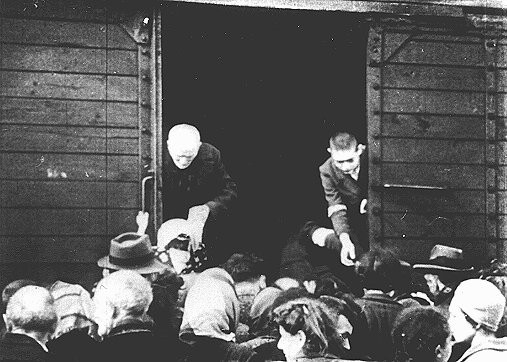
July 22
Between July 22 and September 21, German SS and police authorities, assisted by auxiliaries, deport approximately 265,000 Jews from the Warsaw ghetto to the Treblinka killing center. German forces kill approximately 35,000 Jews in the ghetto during the deportation operation.
July 23
SS Special Detachment Treblinka begins gassing operations at the Treblinka killing center. Between July 1942 and November 1943, the SS special detachment at Treblinka murders an estimated 925,000 Jews and an unknown number of Poles, Roma, and Soviet prisoners of war in Treblinka 2.
July 28–31
German SS and police officials and their auxiliaries kill approximately 9,000 Jews from the Minsk ghetto in mass shootings.
August 1–29
German SS and police officials and their auxiliaries deport more than 76,000 Jews from District Galicia in the Generalgouvernement, including 40,000 from the Lvov (Lwow; L'viv) ghetto, to the Belzec killing center, where the SS Special Detachment kills them.
August 5–17
German SS and police officials and their auxiliaries liquidate the Radom ghetto in German-occupied Poland, deporting about 30,000 Jews, most of them to the Treblinka killing center.
August 13
Croat authorities begin deporting Jews in Croatia into German custody. The German authorities send the Croat Jews to Auschwitz-Birkenau.
August 15–August 28
Gerhart Riegner, representative of the World Jewish Congress (WJC) in Switzerland, sends a cable through the British Embassy to Rabbi Stephen Wise, the President of the WJC. Riegner explicitly informs Wise of the German implementation of their plan to physically annihilate the Jews of Europe.
September 21
Between July 22 and September 21, 1942, German SS and police authorities, assisted by auxiliaries, deport approximately 265,000 Jews from the Warsaw ghetto to the Treblinka killing center. German forces kill approximately 35,000 Jews in the ghetto during the deportation operation.
September 22–November 5
Between September 22 and November 5, 1942, German SS and police officials and their auxiliaries deport 39,000 Jews from Czestochowa, in Radom District of the Generalgouvernement, and another nearly 267,000 Jews who resided in the smaller cities and countryside of Radom District, to the Treblinka killing center.
October 26
With the assistance of collaborationist Norwegian officials, the Germans begin rounding up Jews in Norway. The Germans eventually deport approximately 770 Norwegian Jews to killing centers and concentration camps.
October 28
The first transport of Jews (mostly Austrian) from the Greater German Reich arrives in Auschwitz from Vienna. Between July 17, 1942, and October 28, 1944, German authorities have deported more than 70,000 German, Austrian, and Czech Jews from the Greater German Reich to Auschwitz-Birkenau.
November 5
Between September 22 and November 5, 1942, German SS and police officials and their auxiliaries deport 39,000 Jews from Czestochowa, in Radom District of the Generalgouvernement, and another nearly 267,000 Jews who resided in the smaller cities and countryside of Radom District, to the Treblinka killing center.
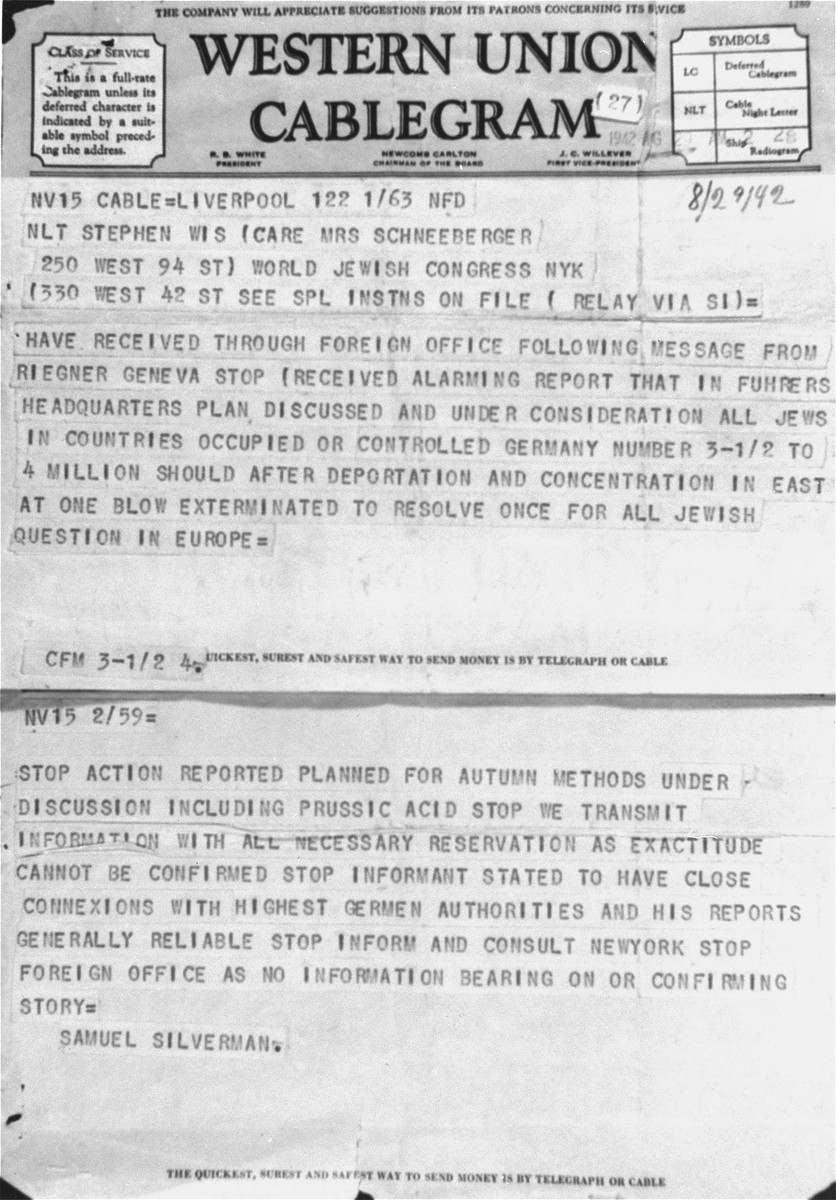
November 24
After receiving confirmation of the report on the German plan to annihilate the Jews of Europe from the US Department of State, Rabbi Stephen Wise, President of the World Jewish Congress, publicizes the contents of the Riegner telegram, exposing German implementation of the “Final Solution.”
December 16
SS chief Heinrich Himmler issues a decree for the deportation of all Roma (Gypsies) living in the Greater German Reich to a special family compound in Auschwitz-Birkenau. Under this decree, the German police authorities will deport more than 18,000 Roma to Auschwitz starting in February 1943.
December 17
The Allied nations, including the governments of the United Kingdom and the United States, issue a press release stating explicitly that the German authorities were engaging in mass murder of the European Jews, and that those responsible for this “bestial policy of cold-blooded extermination” would “not escape retribution.”
December 31
On July 19, 1942, SS chief Heinrich Himmler issued a general order to the Higher SS and Police Leader in the Generalgouvernement that, by December 31, 1942, SS and police authorities “resettle” all Jews residing in the Generalgouvernement, either to killing centers or in closed camps located in major cities.
Critical Thinking Questions
How did the Jews attempt to survive and maintain their community integrity and identity as conditions in the ghetto deteriorated?
How do German actions against the Jews in 1942 illustrate the systematic and bureaucratic nature of the assault on the Jews of Europe?
Investigate the expansion of the camp system and, in particular, the five killing centers.

